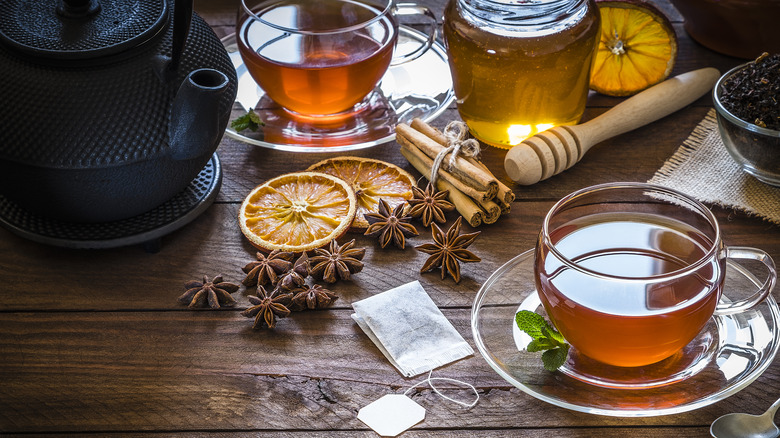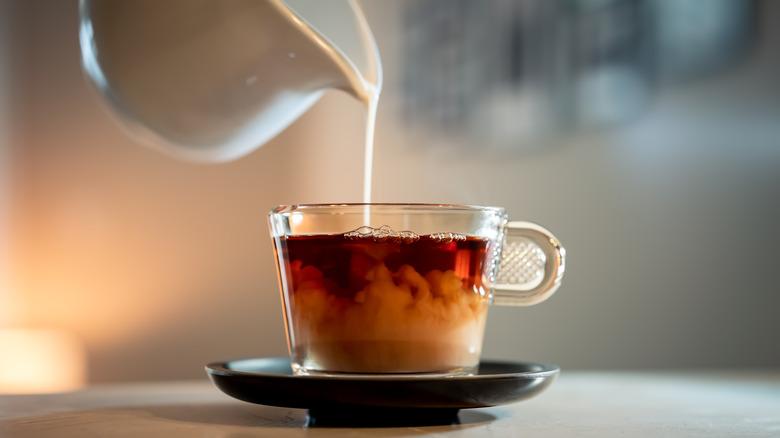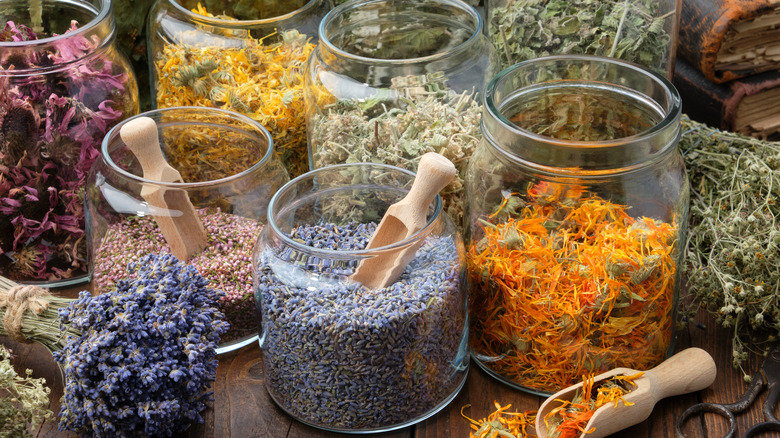Why Decaf Tea Is More Expensive Than Caffeinated
A hot cup of decaffeinated tea can be just what anyone needs to settle in before bed and may be helpful to calm the body and anxious thoughts when they come up. However, decaf tea is often more expensive than regular tea, which can make it cost-prohibitive for anyone on a budget. The reason behind this is the complex processes required to remove caffeine from the leaves.
After tea leaves are harvested, they go through a withering and oxidizing process that accounts for their different flavors; black tea is fully oxidized and has a very strong flavor whereas white tea is unoxidized and very mild in taste. The whole process is labor-intensive, but it becomes even more complicated when the tea is meant to be decaffeinated, which introduces several extra steps that either chemically or naturally strip molecules from the leaves. The tea will then have to go through a second drying step before being packaged and sold.
Even after these processes, however, decaffeinated tea is not completely devoid of the stimulant. It is estimated that 96%-98% of caffeine is removed from decaf tea, leaving 2-4% intact. So, those who are especially sensitive to jitters may find that decaf tea is not the best option.
The decaffeination process affects taste and price
There are two different chemical solvents that may be used for decaffeinating tea leaves. The first is methylene chloride in which harvested tea leaves are soaked in water containing this agent that bonds with the caffeine molecules and removes them. Not only is this process costly, it's also somewhat dangerous; methylene chloride is a common product in paint strippers and metal cleaners, leading some countries to outright ban the sale of decaf teas processed this way. A second method uses ethyl acetate, which is considered healthier because the chemical naturally occurs in teas; this is the most common option used in the United States.
A third decaffeination process is chemical-free and uses carbon dioxide. Under extreme pressure, carbon dioxide reaches a "supercritical" state where it can easily pass through natural materials and work as a solvent. With this method, wet tea leaves are placed in a high-heat, high-pressure chamber and exposed to C02, which bonds with the caffeine and is ultimately filtered out of the chamber. While "natural," the science and mechanisms behind this process are costly and can affect the price of your boxed tea.
The loss of caffeine isn't just costly, however; it affects taste. One of the side effects of these processes is a loss of tannins, which give tea much of its flavor. Those who enjoy the complexity and aromatic notes found in tea may be disappointed in decaffeinated options for this reason or could lead to more flavor additives like honey, spices, sugar, or milk.
Decaffeinated tea is different from caffeine-free tea
It's also important to note there's an important distinction between decaf tea and caffeine-free tea. The former is made from tea leaves that have gone through the complex decaffeination process; the latter is made from plants and herbs that contain no caffeine at all.
For example, chamomile tea is made from the chamomile flower, which is a type of daisy. Peppermint tea is made from peppermint leaves, which contain menthol, providing a refreshing and cool taste even when hot. Rooibos tea is made from a plant native to South Africa that has a naturally sweet flavor. All of these make excellent non-stimulant teas that can be enjoyed any time of the day without the worry of added jitters.
The tea world is a large and sometimes confusing place that feels like it requires a personality test to determine the right drink for any individual. Trial and error is the name of the game and, when all else fails, just read the side of the box to get more info and make an informed choice.



